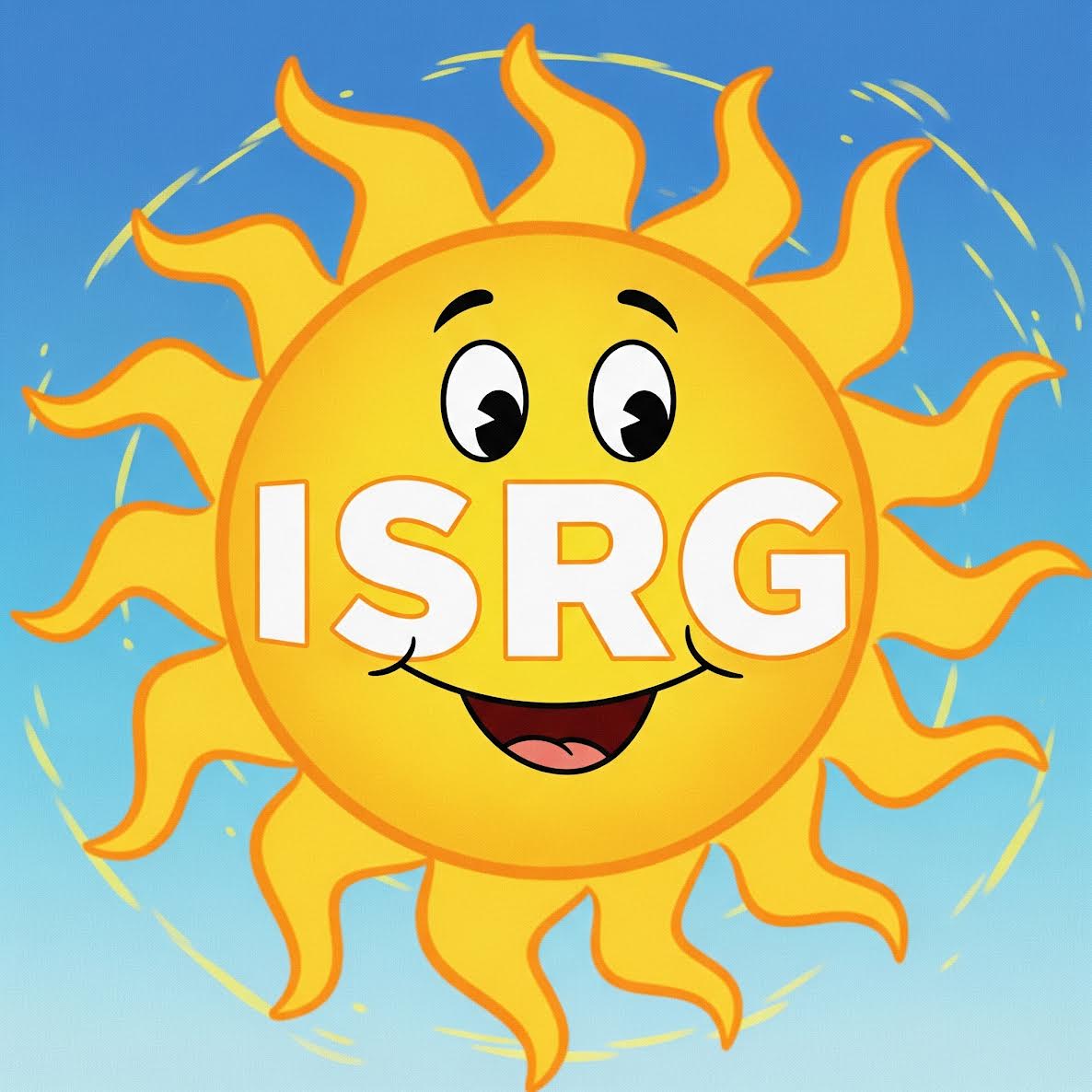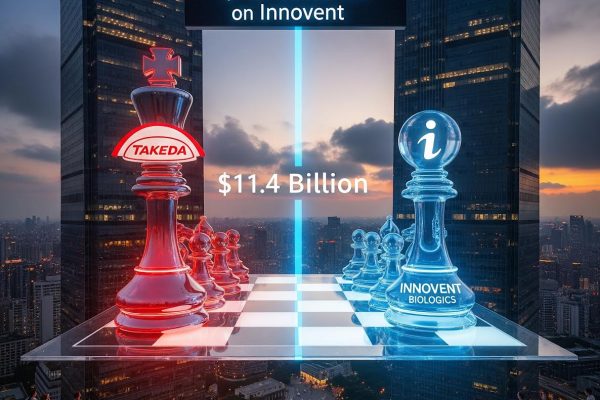Growth Concerns Spark Dramatic Stock Market Reversal (August 1, 2024) – $AZN $EPRX $INDP $META $NEE $VIX Rise!

Major Indexes Performance
The major indexes took a nosedive on Thursday, August 1, 2024, in a dramatic reversal that left investors feeling whiplashed. The NASDAQ plummeted 2.3%, seemingly mistaking itself for a bungee jumper, while the S&P 500 dropped 1.4%, proving that misery indeed loves company. Not to be outdone, the Dow Jones Industrial Average fell 1.2%, shedding a whopping 700 points in a single day. This market mayhem came just a day after a furious rally, turning Wall Street’s mood from ecstatic to despondent faster than you can say “volatility”. The CBOE Volatility Index closed at $18.59, +13.63% today. The small caps on the Russell 2000 closed at 2,186.16 (-3.03%) & The iShares Micro-Cap ETF (IWC) closed at $123.24, -3.85%.
Sector Highlights
Tech stocks took the biggest hit, with Amazon plummeting 5.2% after missing earnings expectations. Intel faced a double whammy, suspending its dividend and announcing a 15% staff cut, resulting in a 15% stock drop. However, it wasn’t all doom and gloom. AstraZeneca (AZN, $81.20, +2.59%) provided a glimmer of hope in the healthcare sector with better-than-expected earnings. NextEra Energy (NEE, $78.39, +2.62%) also managed to stay afloat in the energy sector, proving that even in stormy markets, some companies can keep their heads above water. Meta Platforms (META) bucked the trend, rising 2.5% after beating sales forecasts. The contrasting performances across sectors highlighted the market’s selective nature, with investors carefully scrutinizing individual company results amidst broader economic concerns.
Growth Concerns & Economic Indicators
The Federal Reserve’s hint at potential rate cuts sent mixed signals through the market. While such news typically boosts stocks, this time it sparked concerns about economic health. The yield on 10-year Treasuries dipped below 4%, closing at 3.98 reaching its lowest level since February 1, as investors rushed to the safety of bonds and the 2-yr note yield fell 18bps to 4.16%. This flight to safety was further fueled by reports of weaker-than-expected hiring outside the government sector and lower-than-anticipated employer spending on total pay and benefits. These economic indicators painted a picture of a potentially slowing economy, contributing to the day’s market volatility and investor uncertainty.
Meanwhile, productivity in Q2 surged to 2.3%, outpacing predictions and making economists scratch their heads. Workers apparently decided to channel their inner superheroes, accomplishing more while unit labor costs took a siesta, increasing by a mere 0.9%. The Fed is eyeing this development like a hawk watching its prey, probably wondering if they can bottle this productivity magic.
In the world of manufacturing, the PMI inched up to 49.6, still below the magical 50 mark, suggesting the sector is doing the economic limbo – how low can it go? Construction spending decided to join the party, dropping 0.3% and building a solid foundation of economic concern.
The ISM Manufacturing Index plummeted to 46.8%, lower than a limbo stick at a limboing contest. It seems manufacturers are producing more worry than widgets these days, with demand as elusive as a clear economic forecast.
In summary, today’s economic data is like a game of economic Twister – stretching in all directions and leaving everyone wondering who will fall first. Economists are left scratching their heads, while the Fed watches from the sidelines, ready to make its next move in this peculiar economic dance.
VP Watchlist Updates

Eupraxia Pharmaceuticals (EPRX, $2.86, +3.62% today), is a clinical-stage biotechnology company focused on the development of locally delivered, extended-release products that have the potential to address therapeutic areas with high unmet medical need. The Company strives to provide improved patient benefit and has developed technology designed to deliver targeted, long-lasting activity with fewer side effects. DiffuSphere™, a proprietary, polymer-based micro-sphere technology, is designed to facilitate targeted drug delivery, with extended duration of effect, and offers multiple, highly tuneable pharmacokinetic (PK) profiles. This investigational technology can be engineered for use with multiple active pharmaceutical ingredients and delivery methods.Note that Eupraxia recently completed a Phase 2b clinical trial (SPRINGBOARD) of EP-104IAR for the treatment of pain due to osteoarthritis of the knee. The trial met its primary endpoint and three of the four secondary endpoints. Eupraxia has expanded the EP-104 platform into gastrointestinal disease with the Phase 1b/2a RESOLVE trial for treating EoE. Eupraxia is also developing a pipeline of later- and earlier-stage long-acting formulations. Potential pipeline indications include candidates for other inflammatory joint indications and oncology, each designed to improve on the activity and tolerability of currently approved drugs.On June 5, Eupraxia announced that results from its Phase 2 study of EP-104IAR for the treatment of osteoarthritis of the knee will be presented at the upcoming European Alliance of Associations for Rheumatology (“EULAR”) European Congress of Rheumatology 2024 (the “Meeting”). The EULAR Meeting is being held in Vienna, Austria from June 12-15, 2024.On May 23, Eupraxia announced that regulators in Australia and Canada have cleared the Company’s request to expand its Phase 1b/2a RESOLVE trial, which is evaluating the safety and efficacy of EP-104GI as a treatment for eosinophilic esophagitis (“EoE”). For further details about Eupraxia, please visit the Company’s website at: www.eupraxiapharma.com.
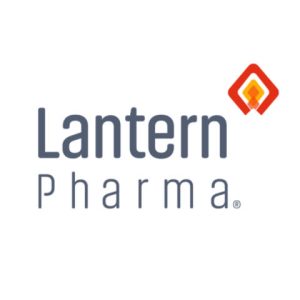 Shares of Lantern (LTRN), an artificial intelligence (“AI”) company developing targeted and transformative cancer therapies using its proprietary RADR® AI and machine learning (“ML”) platform with multiple clinical stage drug program, closed at $4.06, -3.30% and is up 1.72% at $4.13 in the aftermarket. On July 10, Lantern announced a significant advancement towards the development of a diagnostic for its drug candidate LP-184. The diagnostic is currently based on qRT-PCR (quantitative real-time polymerase chain reaction) technology and is focused on quantifying the amount of PTGR1 RNA in patient tumor samples to assess the potential for sensitivity to Lantern’s drug candidate LP-184. The company plans to further develop and validate the assay for its use as a potential tool for patient selection in later stage clinical trials across a broad range of solid tumors that have shown sensitivity to LP-184. Panna Sharma, CEO of Lantern Pharma stated, “This milestone represents a significant leap forward in our precision oncology approach and in ensuring that we enrich our future LP-184 clinical trials with the patients we believe will be most likely to benefit. By working to develop a companion diagnostic for LP-184, we’re not just advancing a drug candidate; we’re paving the way for more personalized and effective cancer treatments for patients that have the highest likelihood of benefitting from the therapy. The planned use of biomarkers like PTGR1 in our clinical trials exemplifies our commitment to data-driven, patient-centric drug development.”Panna Sharma, CEO of Lantern, was interviewed recently on the ‘Today In Nashville’, a program hosted by Carole Sullivan and associated with Nashville’s WSMV 4, an NBC affiliate. Watch it here to learn more.On June 12, Lantern announced that the Japan Patent Office (JPO) has issued a Certificate of Patent for patent application no. 2021-513267 / registration no. 7489966 directed to Lantern Pharma’s drug candidate LP-284 ((+)N-hydroxy-N-(methylacylfulvene)urea). The Certificate of Patent entitled “Illudin Analogs, Uses Thereof, and Methods for Synthesizing the Same” covers molecule LP-284, including claims covering the new molecular entity. A Certificate of Patent is issued after JPO examinations have confirmed the merits of a patent request. Lantern values the broad protection this latest patent provides. Lantern estimates that LP-284 can have the potential to improve outcomes for 40,000 to 80,000 patients with blood cancers annually, with a global annual market potential of $4 Billion USD.
Shares of Lantern (LTRN), an artificial intelligence (“AI”) company developing targeted and transformative cancer therapies using its proprietary RADR® AI and machine learning (“ML”) platform with multiple clinical stage drug program, closed at $4.06, -3.30% and is up 1.72% at $4.13 in the aftermarket. On July 10, Lantern announced a significant advancement towards the development of a diagnostic for its drug candidate LP-184. The diagnostic is currently based on qRT-PCR (quantitative real-time polymerase chain reaction) technology and is focused on quantifying the amount of PTGR1 RNA in patient tumor samples to assess the potential for sensitivity to Lantern’s drug candidate LP-184. The company plans to further develop and validate the assay for its use as a potential tool for patient selection in later stage clinical trials across a broad range of solid tumors that have shown sensitivity to LP-184. Panna Sharma, CEO of Lantern Pharma stated, “This milestone represents a significant leap forward in our precision oncology approach and in ensuring that we enrich our future LP-184 clinical trials with the patients we believe will be most likely to benefit. By working to develop a companion diagnostic for LP-184, we’re not just advancing a drug candidate; we’re paving the way for more personalized and effective cancer treatments for patients that have the highest likelihood of benefitting from the therapy. The planned use of biomarkers like PTGR1 in our clinical trials exemplifies our commitment to data-driven, patient-centric drug development.”Panna Sharma, CEO of Lantern, was interviewed recently on the ‘Today In Nashville’, a program hosted by Carole Sullivan and associated with Nashville’s WSMV 4, an NBC affiliate. Watch it here to learn more.On June 12, Lantern announced that the Japan Patent Office (JPO) has issued a Certificate of Patent for patent application no. 2021-513267 / registration no. 7489966 directed to Lantern Pharma’s drug candidate LP-284 ((+)N-hydroxy-N-(methylacylfulvene)urea). The Certificate of Patent entitled “Illudin Analogs, Uses Thereof, and Methods for Synthesizing the Same” covers molecule LP-284, including claims covering the new molecular entity. A Certificate of Patent is issued after JPO examinations have confirmed the merits of a patent request. Lantern values the broad protection this latest patent provides. Lantern estimates that LP-284 can have the potential to improve outcomes for 40,000 to 80,000 patients with blood cancers annually, with a global annual market potential of $4 Billion USD.
 Shares of Indaptus Therapeutics, Inc. (Nasdaq: INDP) closed at $2.05, +0.00% and is up +1.95% at $2.09 in the aftermarket. Indaptus is a company with the ability to harness both the body’s innate and adaptive immune responses, believes that they are uniquely positioned to revolutionize the treatment of cancer and certain infectious diseases. Indaptus Therapeutics has evolved from more than a century of immunotherapy advances. The Company’s novel approach is based on the hypothesis that efficient activation of both innate and adaptive immune cells and pathways and associated anti-tumor and anti-viral immune responses will require a multi-targeted package of immune system-activating signals that can be administered safely intravenously (i.v.). Indaptus’ patented technology is composed of single strains of attenuated and killed, non-pathogenic, Gram-negative bacteria producing a multiple Toll-like receptor (TLR), Nucleotide oligomerization domain (Nod)-like receptor (NLR) and Stimulator of interferon genes (STING) agonist Decoy platform. The products are designed to have reduced i.v. toxicity, but largely uncompromised ability to prime or activate many of the cells and pathways of innate and adaptive immunity. Decoy products represent an antigen-agnostic technology that have produced single-agent activity against metastatic pancreatic and orthotopic colorectal carcinomas, single agent eradication of established antigen-expressing breast carcinoma, as well as combination-mediated eradication of established hepatocellular carcinomas and non-Hodgkin’s lymphomas in standard pre-clinical models, including syngeneic mouse tumors and human tumor xenografts.On June 4, Indaptus announced that its Chief Medical Officer, Roger Waltzman, M.D., will present an update on the Company’s lead product candidate, Decoy20, at the 7th Annual Next-Gen Immuno-Oncology Conference in Boston on June 20-21, 2024. Dr. Waltzman will present preliminary results from the Company’s ongoing Phase 1 study of Decoy20, an intravenous treatment using killed bacteria designed to broadly stimulate the immune system, in patients with advanced solid tumors.On June 3, Indaptus announced updated data from its ongoing Phase 1 clinical trial of Decoy20 in patients with solid tumors. The data were featured in a poster presentation at the American Society of Clinical Oncology (ASCO) Annual Meeting on June 1 in Chicago, Illinois.
Shares of Indaptus Therapeutics, Inc. (Nasdaq: INDP) closed at $2.05, +0.00% and is up +1.95% at $2.09 in the aftermarket. Indaptus is a company with the ability to harness both the body’s innate and adaptive immune responses, believes that they are uniquely positioned to revolutionize the treatment of cancer and certain infectious diseases. Indaptus Therapeutics has evolved from more than a century of immunotherapy advances. The Company’s novel approach is based on the hypothesis that efficient activation of both innate and adaptive immune cells and pathways and associated anti-tumor and anti-viral immune responses will require a multi-targeted package of immune system-activating signals that can be administered safely intravenously (i.v.). Indaptus’ patented technology is composed of single strains of attenuated and killed, non-pathogenic, Gram-negative bacteria producing a multiple Toll-like receptor (TLR), Nucleotide oligomerization domain (Nod)-like receptor (NLR) and Stimulator of interferon genes (STING) agonist Decoy platform. The products are designed to have reduced i.v. toxicity, but largely uncompromised ability to prime or activate many of the cells and pathways of innate and adaptive immunity. Decoy products represent an antigen-agnostic technology that have produced single-agent activity against metastatic pancreatic and orthotopic colorectal carcinomas, single agent eradication of established antigen-expressing breast carcinoma, as well as combination-mediated eradication of established hepatocellular carcinomas and non-Hodgkin’s lymphomas in standard pre-clinical models, including syngeneic mouse tumors and human tumor xenografts.On June 4, Indaptus announced that its Chief Medical Officer, Roger Waltzman, M.D., will present an update on the Company’s lead product candidate, Decoy20, at the 7th Annual Next-Gen Immuno-Oncology Conference in Boston on June 20-21, 2024. Dr. Waltzman will present preliminary results from the Company’s ongoing Phase 1 study of Decoy20, an intravenous treatment using killed bacteria designed to broadly stimulate the immune system, in patients with advanced solid tumors.On June 3, Indaptus announced updated data from its ongoing Phase 1 clinical trial of Decoy20 in patients with solid tumors. The data were featured in a poster presentation at the American Society of Clinical Oncology (ASCO) Annual Meeting on June 1 in Chicago, Illinois.
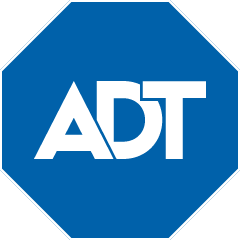
Shares of ADT Inc. (ADT), a leading provider of monitored security and automation solutions for residential and small business customers in the United States and Canada, closed at $7.09, -8.87% after establishing a new 52-wk high of $7.92 during intraday trading recently and is now up .85% at $7.15 in the aftermarket.
On Aug. 1, ADT reported its second quarter results for 2024 that read like a thrilling spy novel, complete with mysterious numbers and covert operations. The company reported a 3% increase in total revenue, reaching $1.2 billion – apparently, securing homes is more lucrative than ever in our paranoid future. Their recurring monthly revenue (RMR) grew by 2% to $355 million, proving that once ADT gets its foot in your door, it’s there to stay
The company boasted “strong customer retention” with a gross revenue attrition of 12.9%, which in ADT speak means they’re only hemorrhaging about 1 in 8 customers. Their “revenue payback” sits at 2.2 years, suggesting it takes that long for customers to stop regretting their decision to sign up.
In a plot twist worthy of a summer blockbuster, ADT’s GAAP income from continuing operations dropped by $54 million. But fear not, shareholders! Their “adjusted” income increased by $3 million. It seems ADT has mastered the art of financial alchemy, turning red numbers green faster than you can say “creative accounting”.
CEO Jim DeVries, channeling his inner motivational speaker, declared that ADT’s success is “powered by our employees’ dedication to the proposition that every second counts.” One can only imagine the intense pressure of working in an environment where bathroom breaks are timed to the millisecond.[

Modular Medical, Inc. (NASDAQ: MODD, $1.52, -3.18%), is a development-stage, insulin delivery technology company seeking to launch the next generation of user-friendly and affordable insulin pump technology. Using its patented technologies, the company seeks to eliminate the tradeoff between complexity and efficacy, thereby making top quality insulin delivery both affordable and simple to learn. Their mission is to improve access to the highest standard of glycemic control for people with diabetes taking it beyond “superusers” and providing “diabetes care for the rest of us.” Modular Medical was founded by Paul DiPerna, a seasoned medical device professional and microfluidics engineer. Prior to founding Modular Medical, Mr. DiPerna was the founder (in 2005) of Tandem Diabetes and invented and designed its t:slim insulin pump. More information is available at https://modular-medical.com.
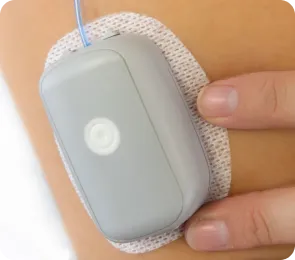
Quote of the Day
Economic Reports
On Tuesday, the May FHFA Housing Price Index hit a perfect 0.0%, proving that sometimes, doing absolutely nothing is an achievement in itself. Meanwhile, the S&P Case-Shiller Home Price Index came in at 6.8%, matching expectations with the precision of a synchronized swimming team. Consumer Confidence surprised everyone by jumping to 100.3, suggesting that Americans are feeling as optimistic as someone who just found a $20 bill in their old jeans. The JOLTS report revealed 8.184 million job openings, slightly down from the previous month, indicating that the job market is playing hard to get.
On Wednesday, the Weekly MBA Mortgage Applications Index took a nosedive, dropping 3.9% faster than a skydiver without a parachute, compared to the previous week’s more modest 2.2% descent.It seems potential homebuyers are treating mortgages like hot potatoes, eager to drop them at the slightest increase in rates.
Meanwhile, the July ADP Employment Change report showed a gain of 122,000 jobs, falling short of the 160,000 expected by analysts who apparently forgot to carry the one in their calculations. This underwhelming performance in job creation had economists wondering if the labor market was taking an unscheduled summer vacation.
The Q2 Employment Cost Index came in at 0.9%, slightly below expectations and down from the previous quarter’s 1.2%. This moderation in wages and benefits had the Fed perking up its ears like a dog hearing a distant squirrel, potentially setting the stage for a rate cut sooner than expected.
In a plot twist worthy of a soap opera, June Pending Home Sales surged 4.8%, dramatically outperforming the expected 1.5% increase. It seems the housing market decided to throw a surprise party, leaving economists scrambling to revise their forecasts and real estate agents doing celebratory cartwheels.
Finally, the July Chicago PMI came in at a less-than-stellar 45.3, down from the previous 47.4. This continued contraction in the Windy City’s business activity had analysts wondering if Chicago’s famous deep-dish pizza economy was getting a bit too deep for comfort.
Videos
Post View Count : 501



